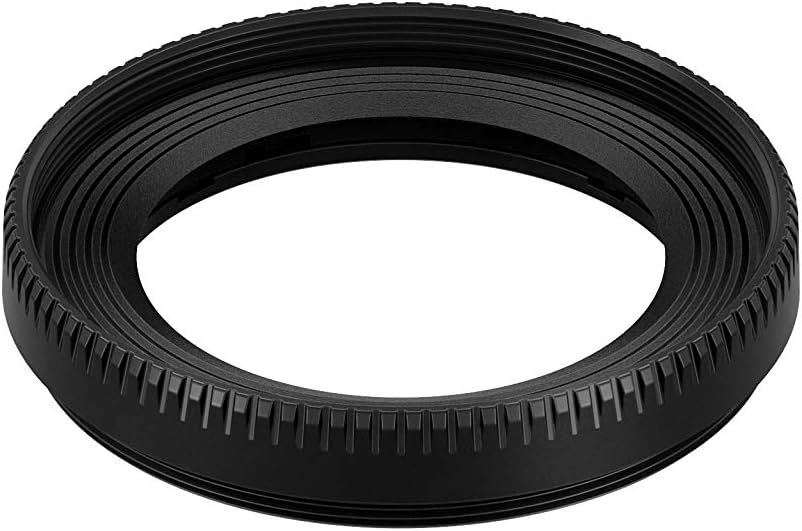•.
Canon RF 35mm 1.8 Macro IS STM
All Arounder with Macro Abilities
Peter
Kun Frary
.
•
The 35mm prime has been a long-time favorite of mine: moderately wide, little perspective distortion, and the large aperture is great for low light. Thus, for me, the 35mm prime has been a great walk-around, landscape, and low-light lens. Canon's RF 35mm 1.8 Macro IS STM adds another feature to that list: macro. According to some internet pundits, not true macro, but quasi-macro.
Taro and Raindrops | EOS R and RF 35mm 1.8 Macro IS STM | F8

This review consists of my opinions and observations as a hobbyist. No scientific measurements, MFT charts or pixel peeking comparisons will be found here.
 Compatibility Compatibility
The RF 35mm 1.8 Macro IS STM lens works on all Canon EOS R series cameras, both full frame and APS-C (1.6X), such as the EOS R6 and R7. It will not fit Canon M series cameras, film SLRs and DSLRs.
Canon RF 35mm 1.8 Macro IS STM | Photo courtesy Canon Inc.

Coverage
On full-frame cameras such as the EOS R, the 63-degree (diagonal) coverage of the RF 35mm 1.8 Macro IS STM is ideal for showing a subject in its environment, making it a wonderful reportage and general-purpose lens. It is not wide enough for arm’s-length or tabletop video blogging, albeit I've used it on a tripod in tight quarters to record guitar solos and lecture-demonstrations.
On APS-C cameras such as the EOS R7, the field of view corresponds to a normal lens (56mm equivalent), making it effective for upper-body portraits and macro.
 Construction Construction
This lens occupies the consumer slot in Canon's range formerly held by the EF 35 2.0 IS USM. Canon designed the RF 35 for the shorter flange distance of mirrorless, improved close focus from .24x to .5x, increased aperture to F1.8 from 2.0, and added another diaphragm blade (9 vs. 8) for smoother bokeh.
Unfortunately, there were downgrades as well: front element extension focus (the older lens was internal focus), lack of distance and DOF scales, no hood bayonet groove, and a slower, albeit smoother, AF motor (STM).
Exterior
The matte black exterior is fingerprint resistant, and styled like Canon's recent non-L RF designs: minimalistic and reminiscent of a mini travel mug. It looks identical to the RF 24 1.8 Macro IS STM. Build quality is robust: rigid plastic barrels, excellent fit and finish and metal lens mount. At 305 g, it is relatively light. There is no weather sealing and a hood is not included. Filter threads are 52mm.
 Controls Controls
The two rings—a knurled control ring and wider ribbed manual focus ring—are distinguished by their differing textures and size. The control ring has click stops and may be programmed with features via the camera TAB Menu: aperture, exposure compensation, AF patterns, etc.
The stabilizer and AF/MF switches are firm, flat in shape and unlikely to be moved inadvertently.
 Image
Quality Image
Quality
Wide open on a full frame camera, the RF 35 1.8 Macro IS STM delivers sharp images with smooth bokeh, round defocused highlights and slight light falloff (if corrections are disabled). It is extremely sharp edge to edge by F2.8 and slightly sharper by F4. Light falloff is nixed by F4. Stopping down further increases DOF but doesn't make much difference in terms of sharpness.
Flowers in Morning Light | EOS R7 and RF 35mm 1.8 Macro IS STM | F6.3

The Super Spectra Coating works well as there is virtually no flare or ghosting in images of sunsets or streetlights.
 Coma and Chromatic Aberration Coma and Chromatic Aberration
When used wide open at night, streetlights and stars on the periphery may show comet or airplane wing like flare—an aberration known as coma. Coma is not visible in most types of images but, if you're a night photographer, coma may be a concern. Coma is progressively reduced as the lens is stopped down: significantly reduced by F2.8 and nil by F4 (F2.8 for APS-C).
Zoom to 400% in Lightroom and coma on the periphery exhibits a small amount of chromatic aberration (CA). CA isn't a significant issue since isn't noticeable at 100% or smaller. As with coma, chromatic aberration disappears when stopped down.
This is a great lens for general low light photography but, if streetlight or stars are in the frame, F2.8 and smaller apertures will nix most artifacts. I wouldn't hesitate to shoot wide open when warranted.
 Distortion Distortion
Disable the lens profile in your RAW converter and a small amount of barrel distortion might be noticed. The amount is so little, unlike many RF designs, I'm okay with disabling the lens profile. JPEGs are automatically corrected in-camera for distortion and light falloff, so most people are unaware of distortion.
Turmeric Buds | EOS R7 and RF 35mm 1.8 Macro IS STM | F5.6

Bokeh
I love the soft whirl of a defocused background, and the nine-blade diaphragm of this lens does not disappoint. Coupled with a large aperture, the RF 35mm 1.8 Macro IS STM renders smooth bokeh and pleasantly round highlights. Smooth bokeh combined with a pin sharp subject center frame really make subjects pop.
 Focus Focus
AF speed is fine for general use, but is not as fast as the old EF 35 2.0 IS USM. The slower focus is due to use of front element extension focus (nested barrel), rather than internal focus. However, auto focus is extremely accurate at normal distances and rarely misses static and slow moving subjects, even in low light. It struggles in AI servo mode while tracking moving objects—e.g., flowers swaying in trade winds—even on high performance cameras like the R6 MK II and R7.
 Macro Macro
Canon uses the word "macro" in the moniker for this lens—RF 35mm 1.8 Macro IS STM. The Oxford Dictionary defines a macro lens as "a lens suitable for taking photographs unusually close to the subject." On the other hand, some cyber pundits insist "this ain't a true macro lens because it focuses to .5X and not 1.0X." Perhaps Canon knows something the pundits are missing?
Historically, .5X has been the norm for 35 and 50mm macro lenses. Why? At .5x the minimum focus distance of this lens is 17 cm, about 6.7 inches. That measurement is from the focal plane to the subject. In other words, the minimum focus distance is measured from the imaging sensor, not the lens front. At .5x the nested barrel is fully extended resulting in an 8.9 cm lens, about 3.5 inches. So 8.9 cm of that 17 cm minimum focus distance specification is taken up by the physical length of the lens. Thus, at .5x, the subject is 8.1 cm from the front element or about 3.2 inches. At this distance, the camera blocks ambient light, necessitating use of a ring light. That situation certainly qualifies as"unusually close to the subject" per the Oxford Dictionary definition.
Canon EOS R6 MK II | Minimum focus distance is measured from the focal place or imaging sensor. | Photo courtesy Canon Inc.

At a hypothetical 1.0x, distance from the front element to subject would be about 4 cm or 1.6 inches. For anything other than copying back-lit slides and negatives, 1.0x isn't practical with a 35mm lens because the front element is too close to the subject, making it nearly impossible to illuminate. Canon knew what they were doing when they designed this lens to be .5x.
Okay, got that off my chest. Zap! Take that evil doers and armchair pundits! This is a true macro lens due to the excellent distortion correction, sharpness across the frame, use of hybrid IS, presence of a ring light mount and, finally, .5x closeup ability. It focuses close enough for flower portraits, flat art and small products. Most of my flower images are shot at .2x to .4x, so .5x is fine for my use. When 1.0x is needed, a 100mm macro lens is a better choice due to larger working distance.
At macro distances, this lens is at its best—reliable and accurate—in single point and one-shot AF modes. AI servo tracking mode works but I avoid it due to slow and frustrating performance at macro distances. When it misses, I use manual focus to get it back in the ball park—otherwise it takes too long to find focus again.
Busy Bee | EOS R7 and RF 35mm 1.8 Macro IS STM | F11

 Movie Servo Movie Servo
Movie servo on my R6 MK II and R7 is silky smooth, especially slow pulls. I found movie servo effective for landscapes, classical musicians onstage/classrooms and talking heads (v-bloggers). Tracking is a bit slow, so not for fast action. Focus noise, while low volume—pianissimo rumbling—will be picked by built-in camera mics during quiet clips. The workaround is to use an external mic, my normal practice even for sync guide tracks.
Focus-by-Wire
Manual focus (MF) is accomplished via focus-by-wire: the manual focus ring activates the focus motor and is not mechanically coupled to the lens. Manual focus is smooth, but control isn't as precise as a good mechanical ring.
 Image Stabilization Image Stabilization
The 5-stop rated hybrid image stabilization (IS) system reduces the effects of camera shake in both the vertical plane and back and forth motions when using the camera angled downwards. At macro distances, 5-stops of stabilization isn't really doable (maybe for infinity). For me, this lens yields about three stops of additional hand holdable range with my EOS R (no IBIS). IS is quiet and isn't audible on video when I use a shotgun mic in the shoe. This IS unit is also designed to detect panning and compensate accordingly.
IBIS and IS
If you own an R series camera with IBIS—in-body image stabilization—Canon claims this lens will deliver up to 7 stops of stabilization! Results will vary according to how steady your technique is—and amount of sleep and coffee consumed—but it was rare for me to get a blurry photo due to hand shake when shooting with IBIS equipped cameras such as the EOS R7 and R6 MK II.
Clitoria Ternatea | EOS R and RF 35mm 1.8 Macro IS STM | F8

 Lens Hood Lens Hood
I like the RF 35 1.8 Macro IS STM for flower duty and wandering around with. Its main flaw is the lack of an OEM hood (Canon's filter sized hood doesn’t count), omitted in favor of a macro ring light mount nobody uses. The groove on the lens barrel is for Canon’s Macro range of Speedlite flashes, and doesn't officially support lens hoods.
Canon's official "hood" is the EW-52, a screw-in accessory resembling a lens cap with a hole in it. At $50 it's pricey for a step-up ring sized piece of aluminum. It doesn't offer much protection from raindrops, dust or glare, but it can be used with a ring light mounted.
Canon EW-52 Hood | Hood wannabe | Photo courtesy Canon Inc.

Hood Workaround 
Other than omission of a hood mount, RF 35mm 1.8 Macro IS STM externals are identical to the RF 24mm 1.8 Macro IS STM. The RF 24 has an OEM hood, the EW-65B. I own a JJC LH-W65B, an EW-65B clone ($14.00), so I tried it. While gently rocking and pressing for a couple seconds, it popped into the macro light groove. Fit is slightly loose: the ring light groove is wider than a hood bayonet groove but the same diameter. It isn't loose as a goose but will rotate if given a firm rub or bump. With that said, it is as secure as Canon clip-on hoods of the 1990s.
JJC LH-W65B Lens Hood | Canon EOS R6 MK II and RF 24-70 2.8L IS USM

Like most bayonet mount hoods, this one may be reversed for compact storage, albeit it's so small I wouldn't bother.
 Final Blurb Final Blurb
I enjoy shooting with the RF 35mm 1.8 Macro IS STM: easy on the shoulder and images are crisp and detailed. And it's versatile: great for landscapes, upper body portraits, snapshots, low light and closeups. Yes, AF is too slow for fast action, but Canon got just about everything else right with this redesign.
Finally, please help support this website by purchasing this lens at Amazon.
Ginger at Moiliili | Canon EOS R and RF 35mm 1.8 Macro IS STM | F8

 Specifications Specifications
| Focal Length |
35mm |
| Elements |
9 groups, 11 elements |
| Maximum Aperture |
f/1.8 |
| Minimum Aperture |
f/22 |
| Lens Mount |
Canon RF |
| Lens Format Coverage |
Full-Frame |
| Angle of View |
63° diagonal |
| Minimum Focus Distance |
.17 m/.56 ft |
| Maximum Magnification |
0.5x |
| Diaphragm Blades |
9, Rounded |
| Focus Type |
Auto focus (STM) |
| Image Stabilization |
5-stop hybrid |
| Lens Coating |
Super Spectra Coating |
| Filter Size |
52 mm |
| Dimensions (ø x L) |
74.4 x 62.8 mm/2.93 x 2.47" |
| Weight |
305 g/10.76 oz |
| MAP |
$499 |
 Source Materials Source Materials
Canon RF 35mm F1.8 MACRO IS STM Instructions (CT1-D072-A). Canon Inc., 2018.
04/27/2024


©Copyright 2024 by Peter Kun Frary | All Rights Reserved
|
 Source Materials
Source Materials
 Compatibility
Compatibility








